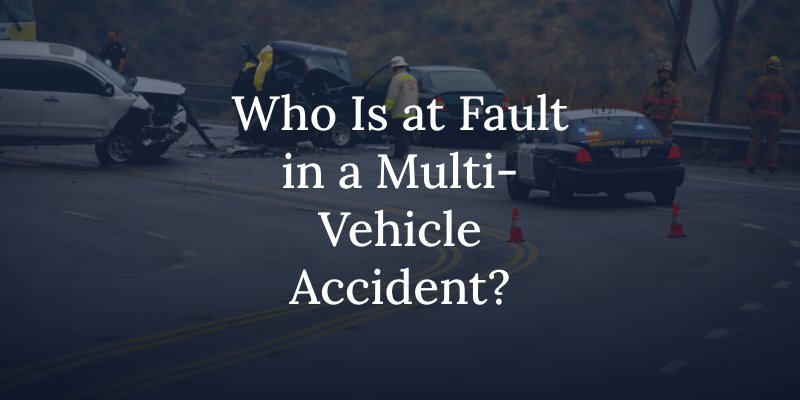Who Is at Fault in a Multi-Vehicle Accident?
Determining fault becomes significantly more complicated when a collision involves more than two vehicles. Unfortunately, multi-vehicle accidents, sometimes called “pile-ups,” are common, especially in heavy traffic, poor weather conditions, or when drivers are distracted. If you’ve been involved in a multi-vehicle accident in Washington State, it’s crucial to understand how fault is determined and what your next steps should be.
If you’ve been injured in a multi-vehicle accident, call our Tacoma car accident lawyers today at (833) 832-2727 or complete our online form to schedule your free consultation. We are here to help you navigate this complex process.
Determining Fault: The Basics
Establishing fault in a multi-vehicle collision requires careful investigation. Various types of evidence are gathered and analyzed to build a complete picture of what happened.
Key Sources of Evidence
Types of evidence used include:
- Police Reports: Police officers who respond to the scene document critical details such as road conditions, weather, vehicle positions, visible damages, driver statements, and any traffic violations observed. Their objective observations often carry significant weight in insurance and legal proceedings.
- Witness Statements: Independent witnesses can offer unbiased accounts of the accident, providing valuable insight into behaviors such as speeding, distracted driving, or sudden lane changes that drivers involved may not admit to.
- Traffic Camera Footage: Footage from nearby traffic cameras, business security systems, or even dashcams can show the exact sequence of events. Visual evidence is often pivotal in confirming or refuting different versions of the accident.
- Vehicle Damage Patterns: Analyzing how and where each vehicle was damaged helps accident reconstruction experts determine the sequence and severity of impacts. For example, crumpled front ends combined with rear-end damage often suggest a chain-reaction collision.

Chain Reaction vs. Multiple Contributing Factors
Multi-vehicle accidents usually fall into one of two categories when it comes to fault:
1. Chain-Reaction Collisions
A single driver’s negligent action often initiates a “domino effect.” Common causes include:
- Following too closely (tailgating)
- Distracted driving (texting or not paying attention)
- Failing to stop in time for traffic
- Speeding in heavy traffic or poor weather
For example, if a driver rear-ends another car at high speed, pushing that vehicle into the one in front of it, they are often considered primarily responsible for the resulting collisions.
2. Multiple Drivers at Fault
Sometimes, several drivers make mistakes that collectively lead to a crash. Examples include:
- One driver suddenly changes lanes without signaling, while another is speeding and unable to stop in time
- Multiple drivers fail to maintain safe distances in icy or rainy conditions
- Drivers ignoring traffic signals, causing confusion and chaos at an intersection
In these scenarios, liability is typically divided based on the degree to which each driver’s actions contributed to the accident.
Comparative Fault in Washington State
Washington follows a “pure comparative negligence” system. This means that even if you are partly at fault, you can still recover damages, but your percentage of fault will reduce the damages. For example, if you are found to be 30% at fault, your compensation would be reduced by 30%.
This system emphasizes the importance of accurately determining the percentage of fault for each party involved. Insurance companies will often attempt to shift more blame onto others to reduce their payout, which is why having an advocate on your side is crucial.
Seek Legal Representation
After a multi-vehicle accident, consult with a Tacoma injury lawyer as soon as possible. An attorney can help protect your rights, investigate the accident, and negotiate with insurance companies on your behalf.
If you’ve been hurt in a multi-vehicle accident, you don’t have to face this challenging situation alone. Call us now at (833) 832-2727 or complete our online form to schedule your free consultation today.